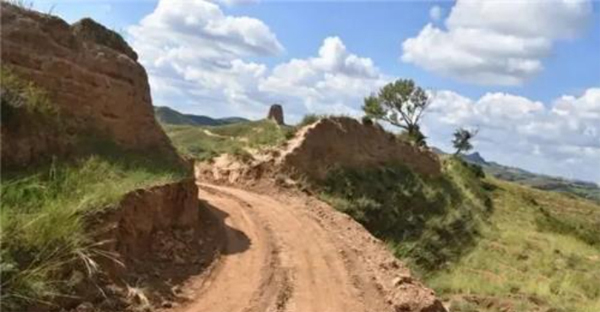An absurd incident occurred in which an excavator drilled a section of the Great Wall built during the Ming Dynasty to pave a road in China.
According to local media such as the Beijing Daily on the 5th, some sections of the earthen wall of the ’32 Great Wall’ belonging to the Great Wall of Yuyu County in Shuzhou, Shaanxi Province have recently been damaged.
On the 24th of last month, the local public security authorities arrested two workers, including Jeong (38) and Wang (55), who demolished the wall with a large excavator after receiving a report of damage to the wall, detaining them as criminals, and are investigating the damage.
They stated that it was cumbersome to go back far, so they demolished the wall to pave the way.
The width of the wall they demolished was such that two vehicles could pass through it.
The 32 Great Walls, so named because there are 32 villages around it, are part of the Great Wall built by the Ming Dynasty with earth in the Hualin Mountain area of Yuwi County to prevent the invasion of the northern forces.
Tombstone and Beacon Tower maintained their original form, and were evaluated as having the greatest preservation value among the Great Wall in Shaanxi Province.
32 The Great Wall is registered as a national scenic spot in China and is also listed as a UNESCO World Heritage Site.
China announced in April 2009 that the Great Wall built by the Ming Dynasty stretches 8851.8 km from Jiayuguan, Gansu Province, at its western end, through Juyongguan, Beijing, to its eastern end, Hushanseong, Liaoning Province, along the Yalu River. .
This reversed the academic consensus that the eastern end of the Great Wall was Shanhaiguan and extended it to Husanseong, extending the length of the Great Wall by 2,500 km.
Husanseong Fortress is Bakjakseong, a representative mountain fortress of Goguryeo, and it did not fall even in the invasion of Taejong of the Tang Dynasty.
In the past, China also acknowledged that the castle was a Goguryeo ruin by putting up information boards on the walls of Husanseong Fortress or the site of a large well.
However, after deleting the mention of Goguryeo when Husanseong was enlarged in 2004, it claimed that Husanseong was the eastern end of the Great Wall.
In September 2009, the State Administration of Cultural Heritage of China even held an opening ceremony for the cover titled ‘Great Wall Dongdan-Hushan’.
Following China’s ‘Northeast Project’ incorporating Goguryeo and Balhae into its own history, arguing that they were local governments of ancient China, and extending the east end of the Great Wall to Husanseong, controversy over distortion of history and fierce opposition from domestic academics arose.
#dont #back.. #Workers #tear #Great #Wall #excavator
2023-09-05 05:41:24


